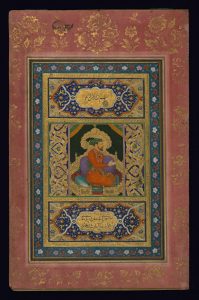2.10 Cultural Notes and Extra Online Materials

Cultural Notes
Durood درود & Salam سلام
“Durood” درود is a Persian word to say “Hello”. You can use Durood as a greeting at any time of the day.
“Salam” سلام is used to say “Hello” as well at any time of day by Persian speakers.
It is normal to shake hands while greeting in Persian culture. In addition, people greet with other words/phrases like “Good morning” and “Good afternoon” at certain times of the day!
Personal Pronoun “You”: تو & شما
Unlike English, Persian has two different second personal pronouns meaning “you”.
- is second person singular تو. It is used with younger, intimate relations such as mother, God, and someone who is lower in socio-economic status. It is an informal way to say “you” in Persian. It is also used with friends and with someone who is of equal status. It is somewhat informal. It should be used carefully only after confirming with the person you are speaking to.
- شماis second person plural. In addition to using it for plurals, It is used with older and respected people of the community. It is also used for someone who is of higher socioeconomic status. It is a formal way to say “you” in Persian language.
Introduction
In Persian language, you typically do not have to go on introducing yourself to everyone. Culturally, you will be introduced to other people by your host, a friend, and/or someone who already knows you. However, you should expect some very personal questions which may be culturally odd for you in your first meeting with someone, such as: are you married?, how much money do you earn?, etc. Please know that the sense of privacy varies between different cultures.
Yes/No Question
You learned in this chapter that you can simply add “ayaa” آیا at the beginning of a simple sentence to form a yes/no question. For example:
- آیا تو آمریکایی هستی؟ (Are you an American?)
However, it is very common for the native speakers to pose a yes/no question by using a simple sentence in a raised tone. It is also very common in English. For example:
- تو آمریکایی هستی؟ (You are an American?)
خدا حافظ/خدا نگهدار/بدرود
Khodahafez/Khoda NegahDar/Bedrood is used to say “goodbye” in Persian language.
Goodnight is only used as goodbye!
Extra/Optional Online Materials
Additional video teaching long and short forms of verb “to be”:
- YouTube video: Irregular Verb “to be” Long Form Instruction
- YouTube video: Irregular Verb “to be” Short Form Instruction
Learn Persian greetings:
Youtube video: Persian Greetings
Most common Persian/Farsi phrases for greeting:
Youtube video: Most Common Farsi Introductions
سپاس!

